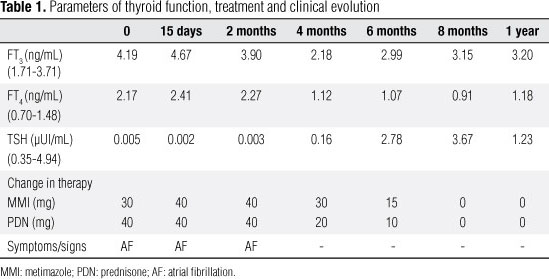Amiodarone (AM)-induced thyrotoxicosis (AIT) is a condition with uncertainties from the diagnostic and therapeutic standpoints. A 54-year old male was referred to the hospital due to thyrotoxicosis. He had history of atrial fibrillation medicated with AM. No history of pre-existing thyroid disease was present, thyroid palpation revealed no goiter, and there were no signs of Graves' ophthalmopathy. Thyroid autoantibodies and thyroid-stimulating hormone receptor antibodies (TRABs) were negative. Thyroid and Doppler ultrasounds were normal. 99mTc-sestaMIBI thyroid scan (STS) showed uptake with rapid washout. AM therapy was discontinued, and combined therapy was started. After a long course of glucocorticoid and thionamides, the patient became euthyroid. It is necessary to distinguish between the types of AIT to decide whether or not continue AM treatment; after that, the appropriate therapy should be selected. STS was very important in the diagnosis of the type of AIT.


